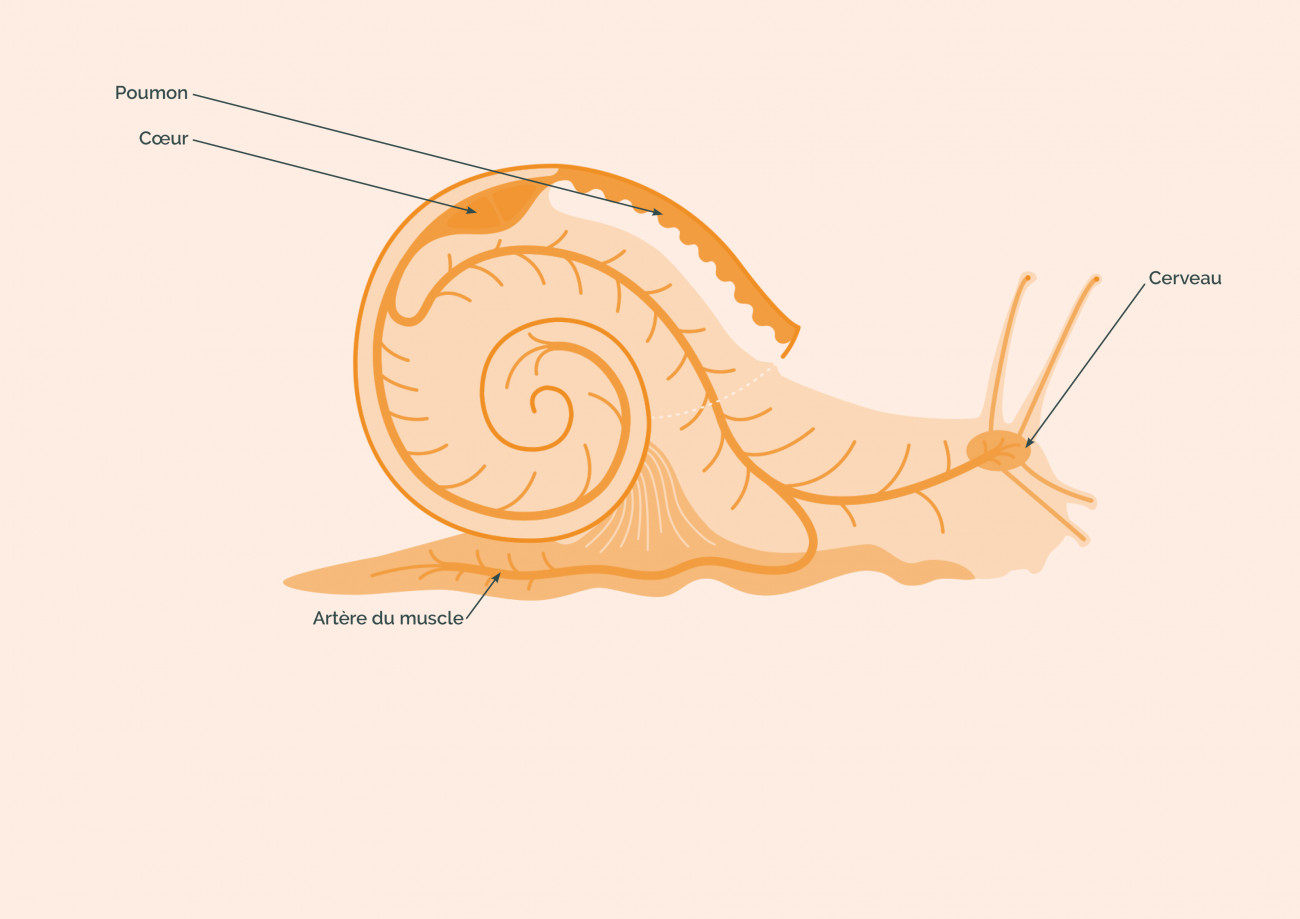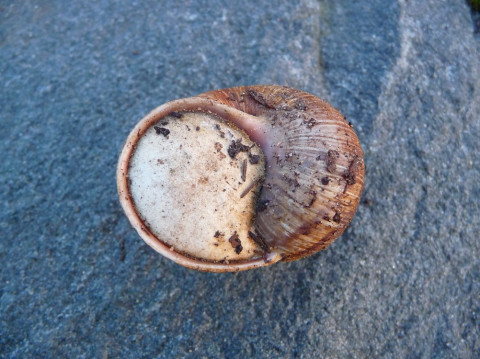Way of life
Unlike other gastropods, snails and slugs live on land. They therefore have many adaptations to the constraints of the terrestrial environment!
Breathing under the shel
In order to live on land, snails and slugs obtain the oxygen they need through a lung. Air does not enter and exit through the mouth but through the pneumostome (breathing hole) which is located on the side, under the shell of the snail.
© Emmanuelle FERT / Creative Commons by-nc-nd
A slobbery move
Organisms living on land are more affected by gravity, so they must move in ways other than in water. Snails and slugs move only forward, thanks to a ventral foot (muscle) that contracts and extends. This type of locomotion is called creeping. The foot secretes a mucus (the "slime") that allows them to glide forward on all types of surfaces and to adhere to vertical walls. The mucus hardens and dries on contact with the air, leaving a shiny trail in the light.
The speed of movement of a Burgundy snail is one millimeter per second or about four meters per hour. The Grande Loche is less fast, it only travels a few meters in one night!
A life of naps
If snails and slugs need mucus to move forward, this mucus must remain moist so as not to dry out. These animals are therefore only active when the humidity is high and often at night. The rest of the time, snails take refuge in their shells.
The snail cannot regulate its internal temperature and therefore depends on the outside temperature to function. When it starts to get too hot or too cold, snails build a thin layer called an epiphragm at the end of their shells to protect themselves from the outside environment and go into a slower life. These epiphragms can have different aspects according to the species, that of the Snail of Burgundy is for example very thick. Certain snails, like the Small grey, do not build a complete epiphragm but are simply stuck to a support.
The slugs cannot take refuge in their shells, they protect themselves from drying out and from predators by burying themselves in the ground.
Internet links
Here you will find a selection of Internet links related to snail biology:


